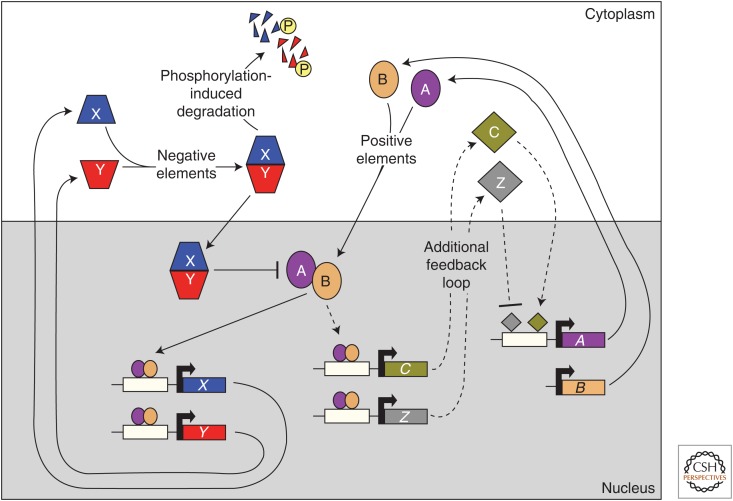Figure 1.
Transcription–translation regulatory feedback loops: a common theme in the generation of eukaryotic circadian rhythms. Many circadian systems are composed of positive and negative elements that are involved in feedback loops. Positive elements (ovals) interact and bind to upstream elements (white rectangles) in the promoter regions (bent arrows) of genes that encode negative elements to activate their expression. These negative components (tetrahedrons) interact to inhibit the activity of the positive elements, which ultimately leads to a decrease in expression of the negative elements. Progressive phosphorylation (P) of negative elements leads to their degradation and a relief of the inhibition of the positive effectors to allow the cycle to start again. Other components (diamonds) may be present that bind to the promoters of genes that encode the positive elements to comprise an additional feedback loop. Arrows and perpendicular lines indicate positive and negative regulation, respectively (see also Bell-Pedersen et al. 2005).

